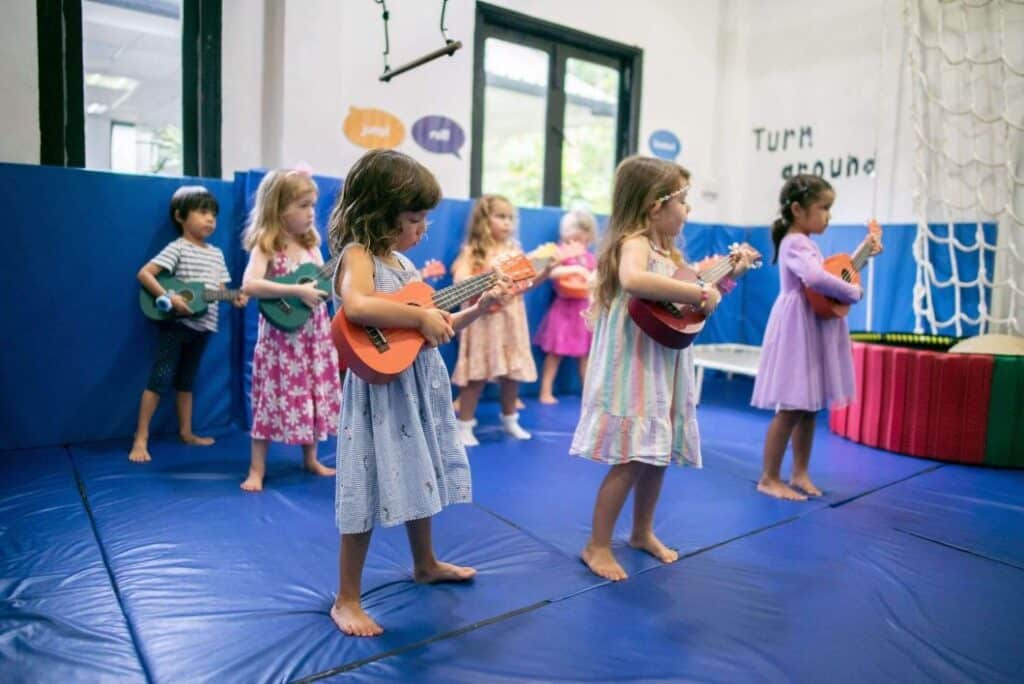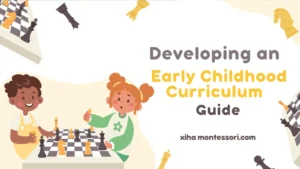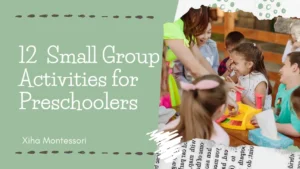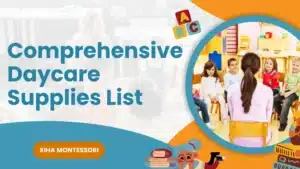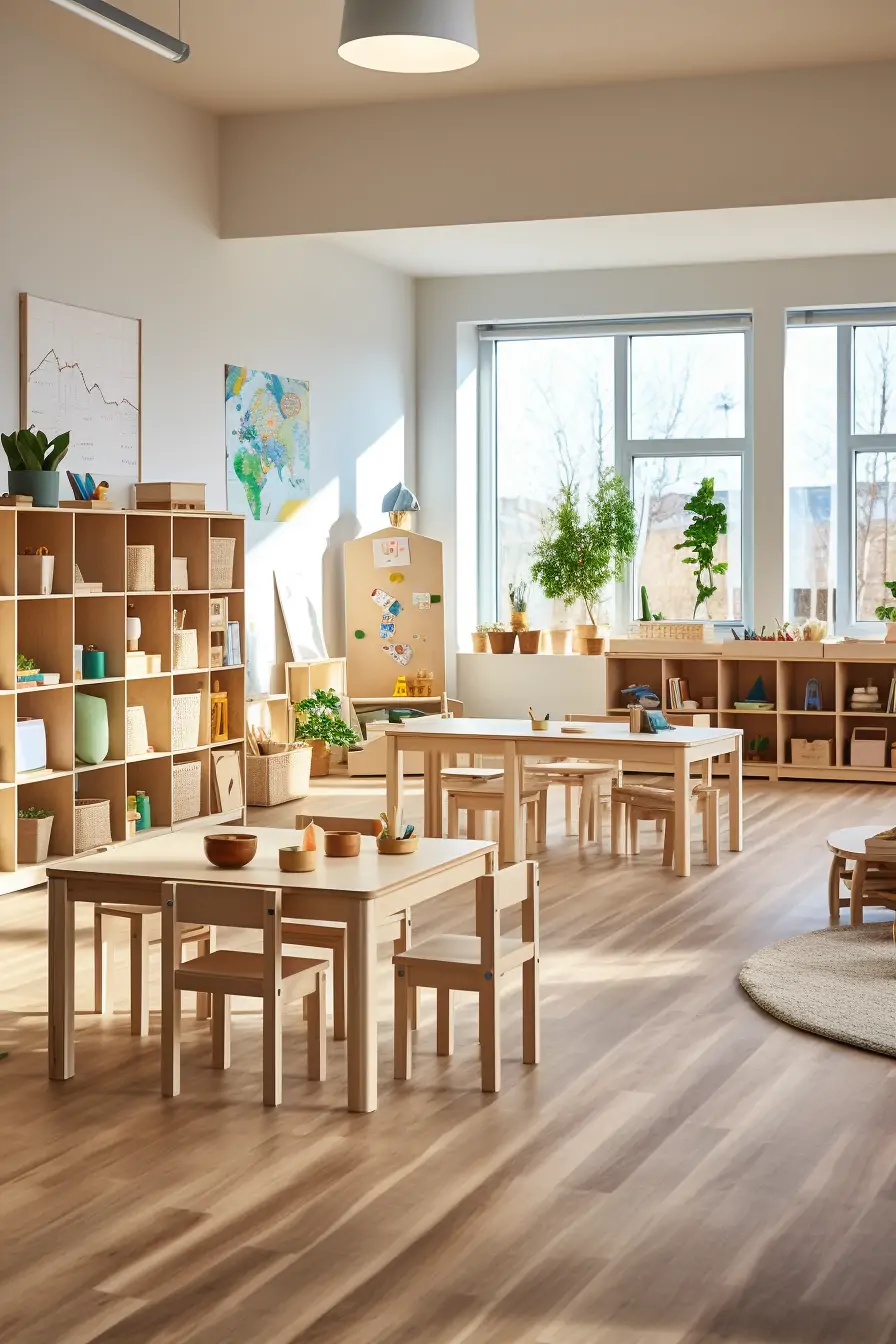From the moment they’re born, sound is an integral part of children’s development. Infants respond to their parents’ voices, lullabies, and white noise, and as they grow, different sounds help them to learn and connect.
In fact, the Parenting Research Centre says, ‘Sound is critically important to the way children learn about their world’ and because there is a tendency to focus on language skills and motor skills, they describe sound as an, ‘Unsung hero in child development’.
With this is in mind, let’s look at why it’s important to explore different sounds with under-fives and how educators encourage sound play during the child care day.

How does music help children develop?
Music is a great way for children to grow physically, cognitively, emotionally, socially, imaginatively, and culturally. Whether they’re hitting a high note or banging a bongo, music provides opportunities for children to:
- Think in new ways
- Develop listening and concentration skills
- Practice language skills and cooperation
- Develop their motor skills and coordination
- Learn about different sounds, instruments and music
- Hone their memory skills through practice and repetition
- Learn about emotions and express their feelings
- Value their own and other cultures
- Have fun and be creative
As important as music is, it’s important to remember that it’s not the only way that children develop through sound.
Parenting and children’s expert, Dr Naomi Hackworth says that, ‘Music is a really big part of children’s lives and a really rich source of sound. We often think about music when we think about sounds and development, but actually it’s much broader than that’.
As well as hearing, feeling, making and moving to music, children are also exposed to sound as they go about their daily lives. Children develop as:
- They have back-and-forth interactions with parents and care-givers, e.g. when a baby cries and gets a comforting response from Mummy
- They learn to make sounds with their voices and bodies, e.g. by talking or clapping
- They learn about different types of sounds through experiences and everyday objects, e.g. when a toddler bangs their toy on carpet and then on wood
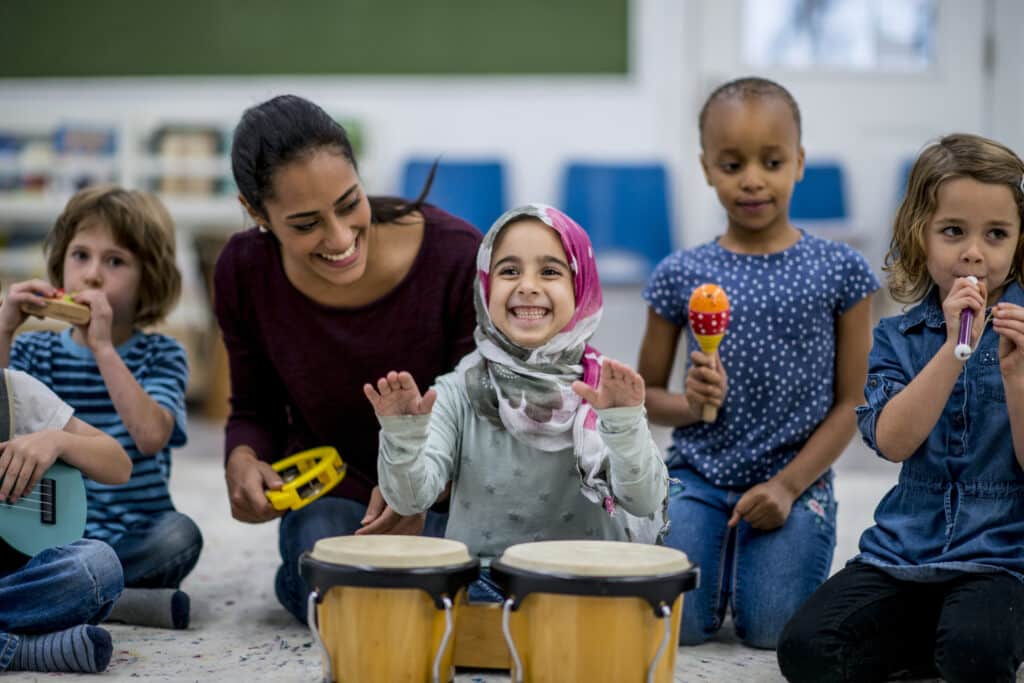
How do educators incorporate sound into the child care day?
Because sound is such an important part of children’s development, there is a real focus on singing, dancing, listening and music at child care. Educators provide open areas where children can move freely to music, and they provide lots of opportunities to hear, produce and share in different sounds.
In particular, educators incorporate sound learning and play by:
- Exploring different sounds with children, talking about contrasting and rhythms, feeling vibrations, and making echoey sounds
- Exploring different voices such as singing, speaking, whispering, and using character voices
- Singing nursery rhymes, traditional chants, and modern tunes
- Dancing and moving to music together, playing games like Musical Chairs, doing the actions for I’m A Little Scarecrow and dancing to The Wiggles
- Making up songs while doing other activities like improvising a ‘play dough song’ while making play dough food
- Introducing children to music from different cultures and musical styles
- Playing a variety of musical instruments with children
- Making instruments at the service and encouraging children to play them, e.g. a simple rainstick or an involved outdoor music wall
- Exploring natural and ‘outside’ sounds at the service, e.g. listening to the wind, the rain, birds cheeping or a plane flying over
- Teaching children about the effect of sounds, such as a normal speaking voice used for quiet time
- Showing children how to make music with their bodies and everyday items like clapping hands, stomping feet, learning to click fingers, and drumming tables
- Teaching children about feelings by playing different types of music and asking them to label the songs as emotions – happy, sad, scary or surprising or to draw a picture about how a song makes them feel
- Establishing routines based on music, e.g. using ‘clean-up songs’ when packing up one activity and moving to the next, quiet songs for naptime and upbeat songs to burn energy before starting a more focused activity
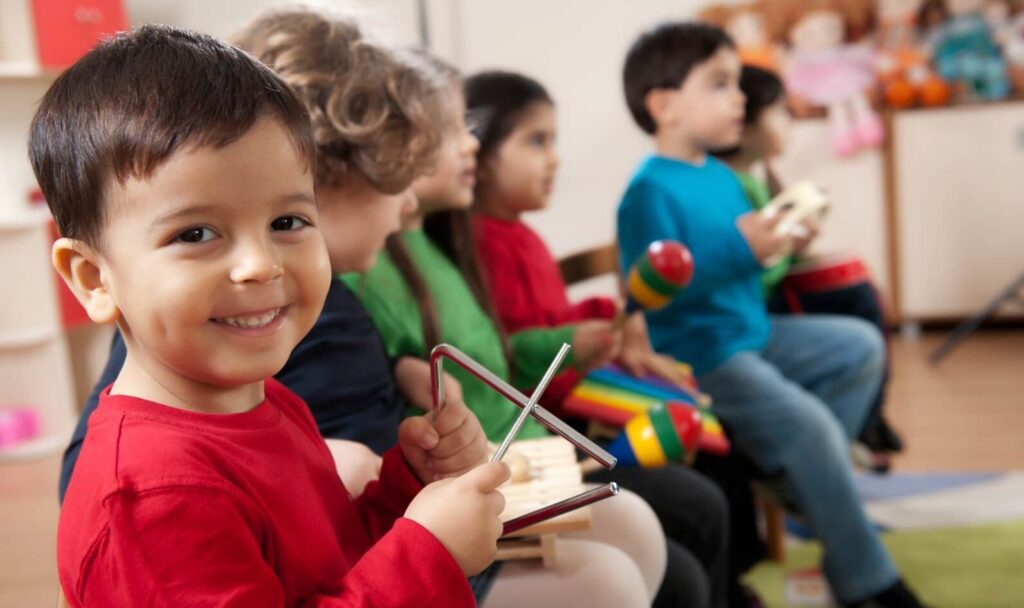
Music and other sounds play a key role in helping children learn and develop. Whether they’re listening to lullabies in the cot, drumming saucepans in the kitchen or singing their heart out at child care, all these experiences are enriching for under fives. Encore!

